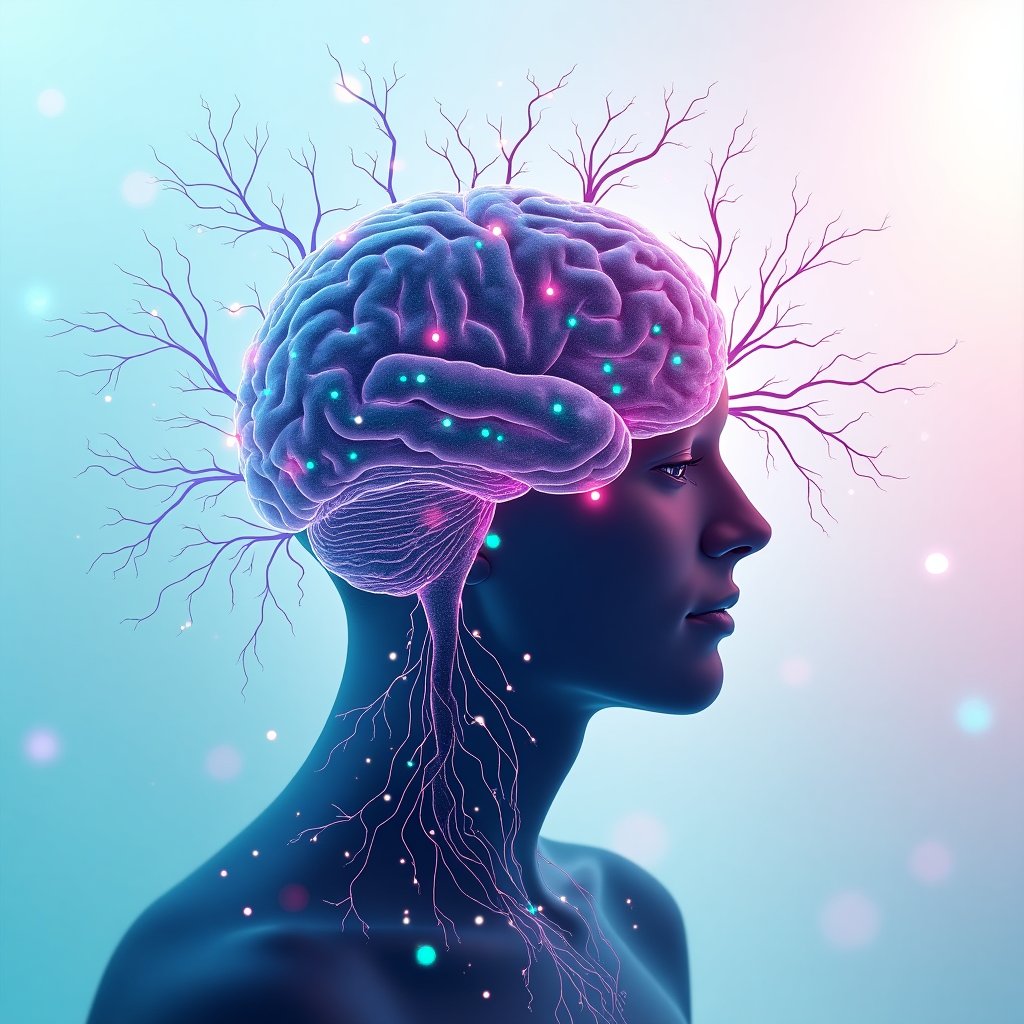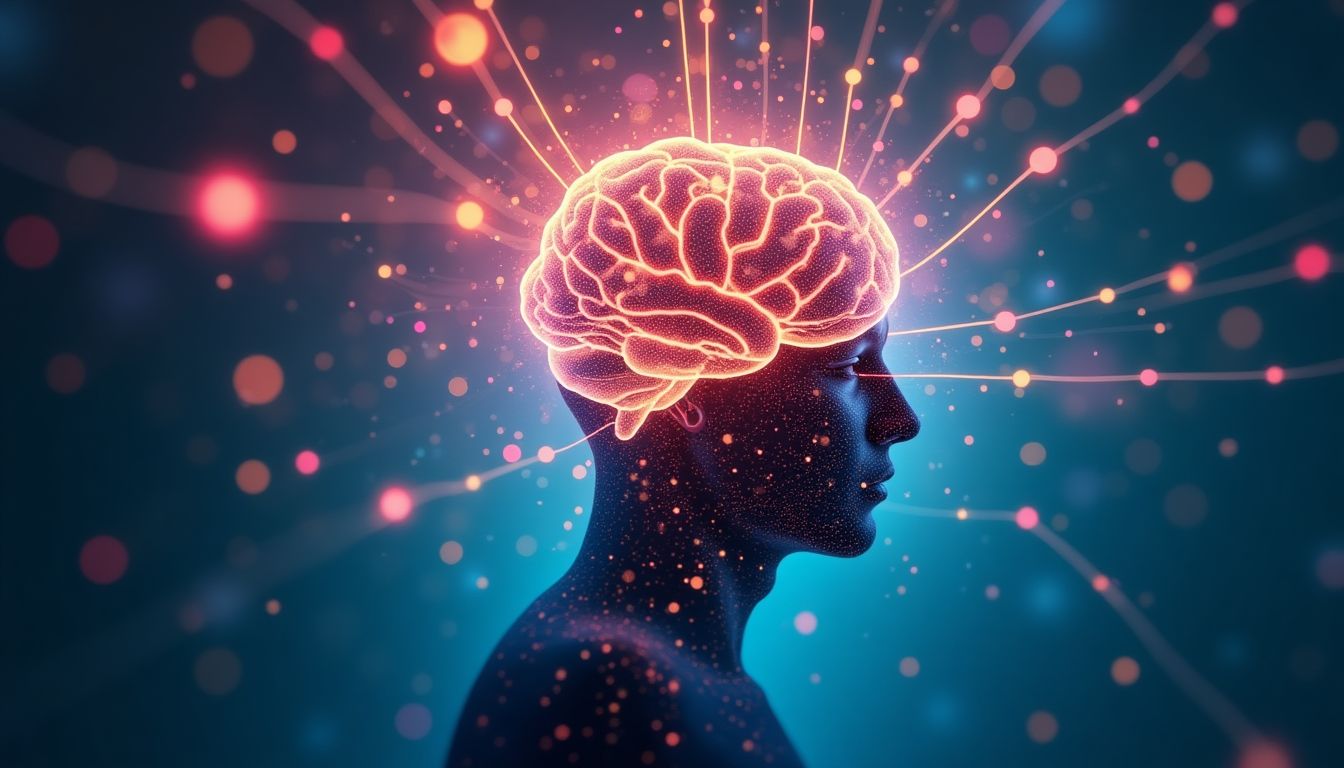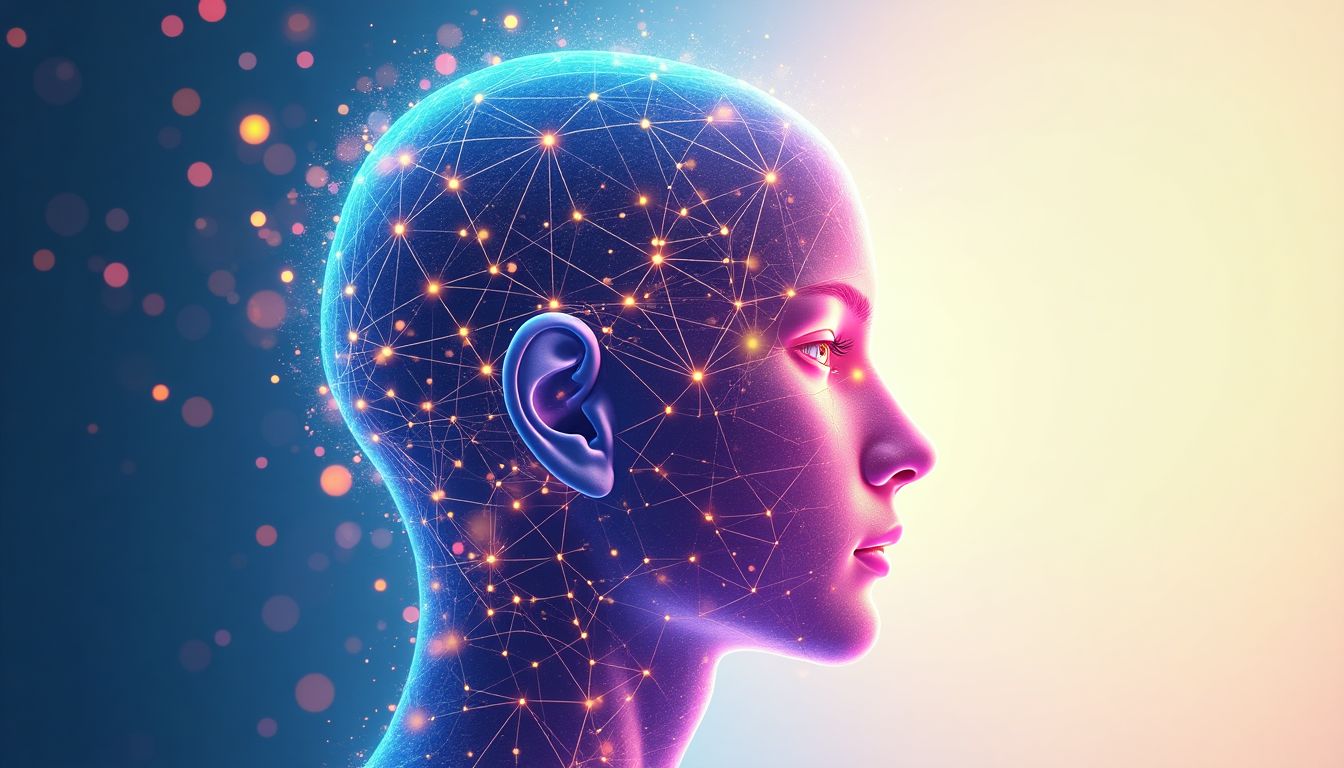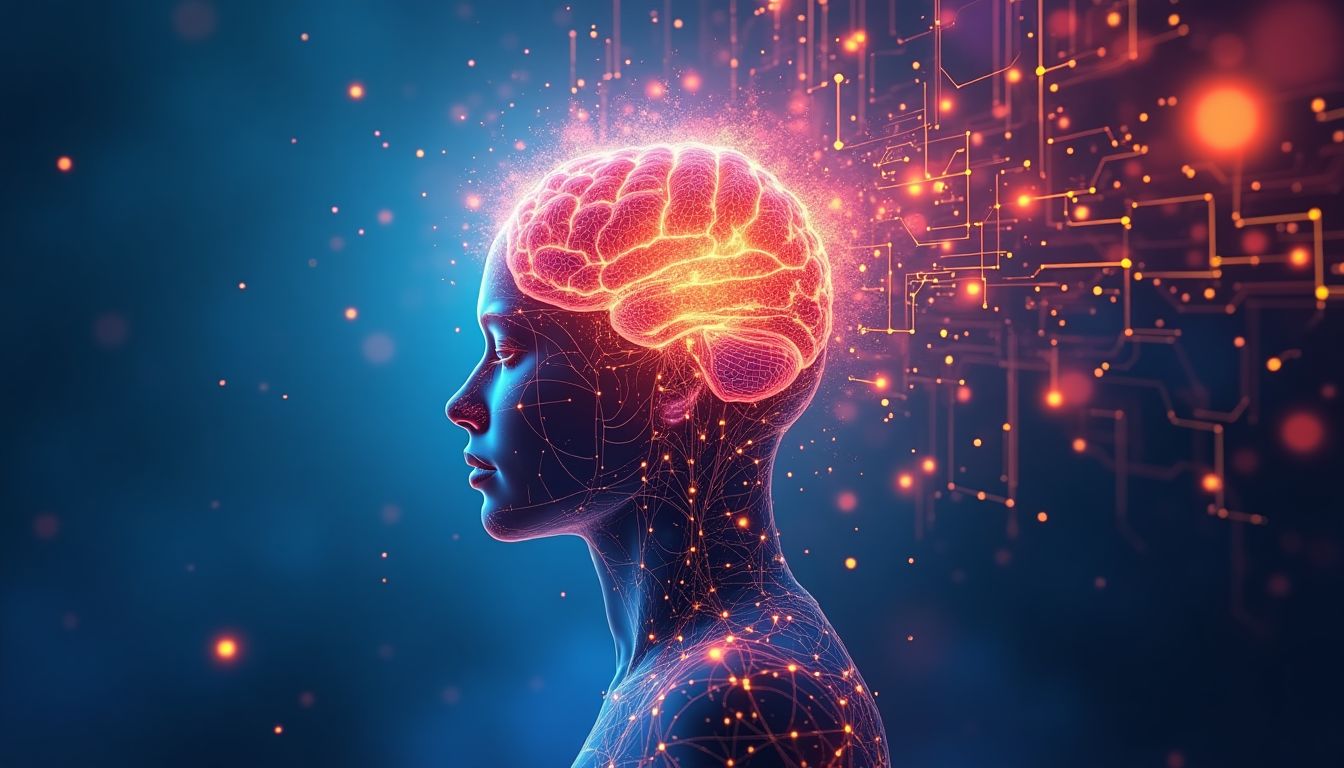The AI Mind Reader: Decoding Human Thoughts Without Words
What if your thoughts could be read without you ever uttering a single word? Imagine a world where artificial intelligence (AI) can decode the intricate patterns of your brain activity and translate them into coherent messages. Is this the future of communication, or a step toward a dystopian reality? This isn’t just the stuff of sci-fi anymore. Researchers like Michio Kaku, Ray Kurzweil, and Elon Musk have all speculated about the possibilities—and pitfalls—of mind-reading technology. From Kurzweil’s predictions about the singularity to Musk’s Neuralink experiments, the idea of AI decoding human thoughts is no longer a far-fetched dream. But how close are we really to making this a reality?
This article dives into the groundbreaking advancements in neural decoding and how AI is revolutionizing the field of brain-computer interfaces (BCIs). We’ll explore the science behind interpreting brain activity, the ethical implications of mind-reading technology, and how AI could transform this once-fictional concept into reality. By the end, you’ll understand the potential, challenges, and roadmap for this technology that could redefine human interaction forever. And yes, we’ll even tackle the big question: Should we be excited or terrified?
1. The Science of Neural Decoding
1.1 Understanding Brain Activity
Your brain is like a bustling city, with billions of neurons firing off electrical signals like tiny lightning bolts. These signals are the language of your thoughts, emotions, and actions. Key regions like the prefrontal cortex (responsible for decision-making) and the hippocampus (involved in memory) play starring roles in this neural symphony. But how do we translate this chaotic electrical storm into something we can understand? That’s where neural decoding comes in.
1.2 How Neural Decoding Works
Neural decoding relies on tools like EEG (electroencephalography), fMRI (functional magnetic resonance imaging), and ECoG (electrocorticography) to capture brain activity. Think of these tools as high-tech microphones picking up the brain’s whispers. But here’s the kicker: raw brain data is messy. That’s where AI steps in. Machine learning algorithms, like CNNs (convolutional neural networks) and RNNs (recurrent neural networks), analyze these patterns to find meaning in the noise. It’s like teaching a computer to read a language it’s never seen before—except the language is your brain.
1.3 Milestones in Neural Decoding Research
Over the past decade, researchers have made jaw-dropping progress. For example, a team at the University of California, San Francisco successfully decoded brain signals to reconstruct speech. Meanwhile, projects like BrainGate have enabled paralyzed individuals to control robotic arms using their thoughts. And let’s not forget Neuralink, Elon Musk’s ambitious venture to merge human brains with AI. These breakthroughs are just the tip of the iceberg. But as we’ll see, the road to mind-reading AI is paved with both promise and peril.
2. From Brainwaves to Words: The Role of AI
If AI were a detective, decoding brainwaves would be its ultimate case. The goal? To translate the electric symphony of neurons into coherent thoughts and words. But how does it actually work? Let’s break it down.
2.1 How AI Interprets Brain Data
At the heart of AI’s mind-reading prowess are deep learning models like Convolutional Neural Networks (CNNs) and Recurrent Neural Networks (RNNs). These algorithms are trained to identify patterns in brain signals, much like teaching a parrot to mimic words. For instance, when you think of the word “apple,” specific neurons fire in predictable ways. AI learns to map these patterns to the corresponding thought or word.
Think of it as Google Translate for your brain. Just as it translates Spanish to English, AI translates brainwaves to words. But unlike Google Translate, AI doesn’t need a dictionary—it creates its own through massive datasets of brain activity.
2.2 Challenges in Neural Decoding Accuracy
Of course, it’s not all rainbows and unicorns. Decoding thoughts is like trying to listen to a radio station with lots of static. Brain signals are noisy, and everyone’s brain is wired slightly differently. What’s a “coffee” thought in your brain might look like a “tea” thought in mine.
AI also struggles with complex or abstract thoughts. While it can decode “I’m hungry” or “Turn on the lights,” it’s still flailing when it comes to “I’m pondering the meaning of life.” Plus, there’s the ethical elephant in the room: Who gets access to your thoughts?
2.3 Real-World Applications
Despite the hurdles, the potential is mind-blowing (pun intended). One of the most exciting applications is helping people with speech disabilities, like those with ALS or locked-in syndrome. Companies like BrainGate are already using AI to let users control computers or robotic arms with their thoughts.
But it’s not just for medical use. Imagine controlling your smart home devices with a thought. “Alexa, turn off the lights” could soon become “*thought* turn off the lights.” It’s like telekinesis, but with Wi-Fi.
3. Ethical Implications of Mind-Reading AI
Mind-reading AI sounds like a dream come true—until you realize it could also be a privacy nightmare. Let’s dive into the ethical quagmire of this technology.
3.1 Privacy Concerns
Imagine your thoughts being as private as your search history. Scary, right? Unauthorized access to brain data could lead to unprecedented invasions of privacy. Governments or corporations might use it for surveillance, profiling, or even manipulating your decisions. It’s like The Imitation Game meets Black Mirror.
The key question is: Who owns your thoughts? If AI can decode them, do you still have control? This is the kind of stuff that keeps ethicists up at night.
3.2 Consent and Autonomy
Consent is tricky when it comes to brain data. Can you truly consent to having your thoughts decoded if you don’t fully understand the technology? And what happens if someone else uses it without your permission? It’s like someone stealing your diary, except it’s your brain.
To address this, we need robust ethical frameworks and clear regulations. Think of it as building a mental “firewall” to protect your thoughts from hackers or prying eyes.
3.3 Societal Impact
Think about how social media changed relationships. Now imagine if we could share thoughts instead of posts. It could deepen connections—or lead to total chaos. Trust could erode if people worry their thoughts might be exposed.
And let’s not forget the fear factor. Many people are already wary of AI. Adding “mind-reading” to its resume could make it even harder to gain public acceptance. The challenge isn’t just technological—it’s about reshaping how we think about privacy and trust in the digital age.
4. The Future of Brain-Computer Interfaces
4.1 Non-Invasive vs. Invasive Technologies
When it comes to brain-computer interfaces (BCIs), there’s a big debate: should we go with non-invasive methods that sit on the surface of the skin or invasive ones that require implants? Non-invasive options like EEG are safer and easier to use—think of them as brain activity trackers you can just slap on your head. But they often lack the precision of invasive methods like ECoG or Neuralink’s brain implants, which dive deeper into the brain for clearer signals.
The trade-offs are clear:
- Non-Invasive Pros: No surgery required, low risk, and accessible for everyday use.
- Non-Invasive Cons: Lower resolution, struggles with decoding complex thoughts.
- Invasive Pros: High accuracy, better for detailed neural decoding.
- Invasive Cons: Requires surgery, higher risk, and ethical concerns.
Recent advancements, however, are blurring these lines. New wearable tech, like Openwater’s devices, promises higher resolution without the need for implants. Could the future be a hybrid approach? Only time will tell.
4.2 Neural Implants and Hybrid Intelligence
Neural implants, like those developed by Neuralink, are pushing the boundaries of human-AI symbiosis. Imagine a chip in your brain that not only helps you control devices with your thoughts but also enhances your memory or speed of thinking. This is the vision of hybrid intelligence—merging human brains with AI for supercharged cognitive abilities.
Potential benefits include:
- Treating neurological disorders like Parkinson’s or epilepsy.
- Enhancing learning and memory retention.
- Enabling seamless communication between humans and machines.
But it’s not all sunshine and rainbows. Challenges like the body rejecting implants, potential hacking risks, and ethical dilemmas around “enhanced” humans remain. Elon Musk’s Neuralink is leading the charge, but even they face hurdles in making these implants widely accepted and safe.
4.3 Long-Term Possibilities
Looking further ahead, the possibilities are mind-boggling. What if we could communicate telepathically, using thoughts alone? Or merge human consciousness with AI to create a shared intelligence? While this sounds like science fiction, researchers at MIT and Stanford are already working on ways to map and decode abstract thoughts.
Here’s a glimpse of what’s on the horizon:
| Scenario | Potential | Challenges |
|---|---|---|
| Telepathic Communication | Instant, thought-based communication. | Decoding abstract thoughts accurately. |
| Shared Intelligence | Collaborative problem-solving with AI. | Ethical concerns about individuality. |
| Enhanced Cognition | Improved memory and learning. | Risk of over-reliance on technology. |
The future of BCIs is as exciting as it is uncertain. Will we embrace this technology, or fear its implications? Only time—and innovation—will give us the answers.
5. Roadblocks and Challenges
5.1 Technical Limitations
Decoding the human brain is no easy task. While AI has made strides, the brain’s complexity remains a formidable challenge. For instance, interpreting abstract thoughts or emotions is far harder than translating simple motor commands or words. The noise in brain signals—like background electrical activity—complicates things further, making it tough for AI to pick out the meaningful patterns.
Here are the key technical hurdles:
- Signal Noise: Brain activity is messy, and filtering out the noise is tricky.
- Individual Variability: Each brain is unique, making it hard to create one-size-fits-all solutions.
- Data Resolution: Non-invasive methods often lack the detail needed for precise decoding.
To overcome these, researchers are turning to advanced algorithms and high-resolution imaging techniques. But even with these tools, there’s a long way to go before we can decode thoughts with perfect accuracy.
5.2 Ethical and Legal Hurdles
Imagine someone could access your thoughts without your permission. Creepy, right? That’s one of the biggest ethical concerns with mind-reading AI. Privacy is a major issue, especially if governments or corporations misuse the technology for surveillance or control. Consent is another—how do we ensure people stay in control of their own thoughts?
Here’s what needs to be addressed:
- Privacy Laws: New regulations to protect neural data.
- Consent Frameworks: Clear rules on how and when mind-reading tech can be used.
- Accountability: Holding misuse of this technology.
Organizations like the Association for Computing Machinery are working on ethical guidelines, but it’s a global issue that requires international cooperation.
5.3 Public Perception and Acceptance
Let’s face it: mind-reading AI sounds scary to a lot of people. Movies like “The Matrix” or “Inception” have painted a dystopian picture of technology that invades our minds. Overcoming these fears is crucial for widespread acceptance. Education is key—helping people understand the benefits, like assisting those with disabilities, can shift the narrative.
Ways to build trust include:
- Transparency: Clearly explain how the technology works.
- Public Engagement: Involve communities in discussions about its use.
- Proven Success: Showcase real-world applications that improve lives.
At the end of the day, the success of mind-reading AI hinges on how well we address these challenges. Will we embrace it as a tool for good, or let fear hold us back? The choice is ours.
6. AI Solutions: How Would AI Tackle This Issue?
6.1 Data Collection and Standardization
To build a robust AI system capable of decoding human thoughts, the first step is to create a comprehensive database of brain activity patterns. This requires collaboration with leading institutions like MIT, Stanford University, and the Allen Institute for Brain Science. By pooling data from diverse populations, we can account for individual variability and improve the accuracy of neural decoding models. Standardizing data formats and sharing anonymized datasets will be critical to accelerating progress.
6.2 Advanced Algorithms
Next, we need cutting-edge algorithms to interpret the complex patterns of brain activity. Hybrid models combining Convolutional Neural Networks (CNNs), Transformers, and Reinforcement Learning could be the key. These models must be trained to map brain signals to specific thoughts or words, leveraging transfer learning to adapt to individual differences. For example, a model trained on one person’s brain data could be fine-tuned for another, reducing the need for extensive recalibration.
6.3 Real-Time Processing
For practical applications, AI must process brain data in real time. This requires lightweight models that can run on portable, non-invasive devices like EEG headsets. Edge computing, where data is processed locally rather than in the cloud, can minimize latency and ensure privacy. Companies like Neuralink are already exploring this approach, but broader collaboration with tech giants like Google and Microsoft could accelerate progress.
6.4 Ethical AI Frameworks
As we develop mind-reading AI, ethical considerations must be at the forefront. Privacy-preserving techniques like Federated Learning can ensure that sensitive brain data remains secure. Collaborating with ethicists and policymakers will be essential to establish guidelines for consent, data ownership, and usage. Organizations like the Electronic Frontier Foundation (EFF) and the ACLU can provide valuable insights into protecting individual rights.
6.5 Testing and Validation
Before deploying mind-reading AI, rigorous testing is essential. Large-scale clinical trials involving diverse populations will ensure accuracy and safety. Findings should be published in peer-reviewed journals like Nature Neuroscience to build trust and transparency. Partnerships with medical institutions like the Mayo Clinic and Johns Hopkins Medicine can provide the necessary infrastructure for these trials.
Action Schedule/Roadmap (Day 1 to Year 2)
Day 1: Assemble a multidisciplinary team of neuroscientists, AI experts, ethicists, and policymakers. Key personnel could include leaders from OpenAI, DeepMind, and IBM Research.
Day 2: Establish partnerships with leading research institutions like Harvard University and Caltech to leverage their expertise and resources.
Week 1: Finalize research objectives and secure funding from organizations like the National Science Foundation (NSF) and Bill & Melinda Gates Foundation.
Week 2: Begin data collection from pilot participants, ensuring diversity in age, gender, and neurological conditions.
Month 1: Develop baseline AI models for neural decoding, focusing on hybrid architectures that combine CNNs, Transformers, and Reinforcement Learning.
Month 2: Conduct initial testing and refine algorithms based on feedback from neuroscientists and ethicists.
Year 1: Launch a global database of brain activity patterns, making anonymized data available to researchers worldwide.
Year 1.5: Complete clinical trials for non-invasive devices, ensuring they meet safety and accuracy standards.
Year 2: Release the first commercial prototype for medical applications, such as assisting individuals with speech disabilities or neurological disorders.
The Dawn of Thought-Driven Communication
The ability to decode human thoughts without words is no longer the stuff of science fiction. With advancements in AI and neural decoding, we are standing at the threshold of a new era in communication and human-machine interaction. Imagine a world where individuals with speech disabilities can express themselves effortlessly, or where controlling devices with your mind becomes as natural as using a smartphone. The possibilities are as thrilling as they are transformative.
However, this technology is not without its challenges. The ethical implications of mind-reading AI are profound, raising questions about privacy, consent, and autonomy. How do we ensure that this powerful tool is used responsibly? How do we prevent misuse by governments or corporations? These are questions that demand thoughtful answers, and they require collaboration between scientists, ethicists, and policymakers.
Despite these challenges, the potential benefits are immense. By fostering a global effort to standardize data, develop advanced algorithms, and establish ethical frameworks, we can unlock the full potential of AI mind-reading. This technology has the power to redefine how we communicate, how we interact with machines, and even how we understand ourselves.
As we move forward, let us embrace the promise of this technology while remaining vigilant about its risks. The future of thought-driven communication is not just about decoding brain signals—it’s about creating a world where technology enhances our humanity rather than diminishes it. The journey ahead is complex, but with collaboration and innovation, we can build a future where the boundaries between mind and machine blur in ways that empower us all.
What do you think about the potential of mind-reading AI? Could this technology revolutionize communication, or does it pose too great a risk to our privacy and autonomy? Share your thoughts in the comments below, and don’t forget to subscribe to our newsletter for more insights into the future of technology. Together, let’s make iNthacity the Shining City on the Web!
FAQ
Q1: Can AI really read minds?
A1: While AI can interpret brain activity patterns, it is not yet capable of reading abstract thoughts. Current technology focuses on decoding specific signals, such as speech or motor commands. For example, researchers at MIT have successfully reconstructed speech from brain activity using advanced algorithms. However, this is still far from the sci-fi idea of reading every thought in your head.
Q2: Is mind-reading AI safe?
A2: Ethical concerns like privacy and consent must be addressed. Proper safeguards and regulations are essential to ensure safety and trust. Organizations like the ACLU are already raising alarms about the potential misuse of this technology. Without strict guidelines, there’s a risk of unauthorized access to your thoughts, which could lead to surveillance or manipulation.
Q3: Who could benefit from this technology?
A3: Individuals with speech disabilities, neurological disorders, or those seeking enhanced human-machine interaction could benefit significantly. For instance, projects like BrainGate are helping paralyzed individuals communicate using brain-computer interfaces. This technology could also revolutionize fields like gaming, education, and even mental health therapy.
Q4: How long until this technology is widely available?
A4: While early prototypes exist, widespread adoption may take a decade or more due to technical and ethical challenges. Companies like Neuralink are working on making brain-computer interfaces more accessible, but there’s still a long way to go before this becomes a household technology.
Q5: Will this technology replace traditional communication?
A5: It is unlikely to replace verbal or written communication entirely but could complement it in specific contexts, such as medical or technological applications. Imagine controlling your smart home devices with just your thoughts or having a silent conversation with someone across the globe. The possibilities are endless, but traditional communication methods will likely remain the norm for everyday interactions.
Q6: What are the biggest challenges in developing mind-reading AI?
A6: The biggest challenges include:
- Noise in brain signals: Brain activity is incredibly complex, and filtering out irrelevant data is a major hurdle.
- Individual variability: Everyone’s brain works slightly differently, making it hard to create a one-size-fits-all solution.
- Ethical concerns: Issues like privacy, consent, and potential misuse need to be addressed before this technology can be widely adopted.
Q7: Are there any real-world examples of mind-reading AI in action?
A7: Yes! Researchers at the University of California, San Francisco have successfully used AI to decode brain activity and reconstruct speech. Similarly, Neuralink has demonstrated how brain implants can allow users to control devices with their thoughts. These are just the beginning, but they show the immense potential of this technology.
Q8: What role does AI play in neural decoding?
A8: AI acts as the brain behind the operation, so to speak. It uses machine learning algorithms to analyze patterns in brain activity and map them to specific thoughts or actions. For example, deep learning models like CNNs and RNNs are often used to process and interpret the vast amounts of data generated by brain scans.
Q9: What are the ethical implications of mind-reading AI?
A9: The ethical implications are vast and complex. Some key concerns include:
- Privacy: How do we ensure that our thoughts remain private?
- Consent: Can someone truly consent to having their thoughts read?
- Misuse: What happens if this technology falls into the wrong hands?
Organizations like the Electronic Frontier Foundation are already working on frameworks to address these issues, but much more needs to be done.
Q10: How can I learn more about this technology?
A10: If you’re curious about the latest advancements in AI and neural decoding, check out resources from leading institutions like Stanford University or the Allen Institute for Brain Science. You can also stay updated by subscribing to our newsletter and becoming a permanent resident of iNthacity: the "Shining City on the Web".
Wait! There's more...check out our gripping short story that continues the journey: Genesis Libra
Disclaimer: This article may contain affiliate links. If you click on these links and make a purchase, we may receive a commission at no additional cost to you. Our recommendations and reviews are always independent and objective, aiming to provide you with the best information and resources.
Get Exclusive Stories, Photos, Art & Offers - Subscribe Today!





























Post Comment
You must be logged in to post a comment.